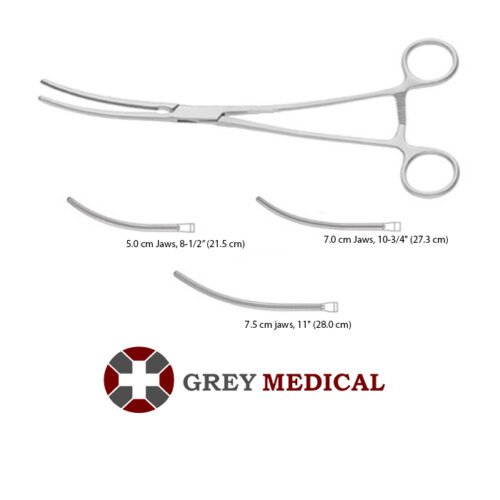Minimally invasive surgery (MIS) is transforming the field of vascular surgery by reducing recovery time and minimizing trauma to patients. One of the most important tools in these delicate procedures is the vascular clamp, which allows surgeons to precisely control blood flow without causing significant tissue damage. In this blog, we will explore how vascular clamps are employed in minimally invasive procedures and how their design plays a vital role in successful outcomes.
1. Minimally Invasive Surgery and Its Challenges
Minimally invasive surgery has numerous advantages over traditional open surgeries. Smaller incisions result in less pain, reduced scarring, and quicker recovery times. However, working through smaller incisions can present challenges for the surgical team, especially when controlling blood flow in delicate blood vessels. This is where vascular clamps prove their worth by offering precision and control within confined surgical spaces.
2. Specialized Vascular Clamps for MIS
For minimally invasive vascular surgeries, specialized vascular clamps are often used. Some commonly used clamps in MIS include:
- Bulldog Clamps: Small and spring-loaded, these clamps are ideal for occluding small blood vessels during procedures such as endovascular aneurysm repair (EVAR) or minimally invasive coronary artery bypass graft (MICS-CABG).
- Fogarty Clamps: These are lightweight, flexible clamps with atraumatic jaws, ensuring delicate handling of vessels during MIS. They are frequently used in endovascular procedures.
- Cooley Vascular Clamps: With their long and flexible shafts, Cooley clamps are frequently employed in thoracic and cardiovascular surgeries, where access through small incisions is necessary.
3. The Importance of Atraumatic Design
One of the essential design features of vascular clamps for MIS is their atraumatic jaws. In minimally invasive procedures, the surgeon has less room to work with, which makes it even more important that the clamps do not damage the vessel walls. Atraumatic clamps are designed with soft coatings or smooth, finely serrated edges to apply controlled pressure without crushing delicate tissues.
4. Enhanced Precision in Endovascular Procedures
Endovascular procedures, which involve treating vascular conditions from within the blood vessels using catheters, rely heavily on vascular clamps. During procedures such as stent placements or angioplasties, vascular clamps help control blood flow in targeted areas, allowing surgeons to perform repairs without the risk of significant blood loss.
5. Patient Benefits of Vascular Clamps in MIS
The use of specialized vascular clamps in MIS leads to:
- Reduced Post-Operative Pain: By minimizing the need for large incisions, patients experience less discomfort after surgery.
- Faster Recovery: The precision offered by these clamps contributes to fewer complications, allowing patients to recover more quickly and return to their normal activities.
- Lower Infection Rates: Smaller surgical wounds mean a lower risk of infection, a significant concern in vascular surgeries.
6. Grey Medical’s Minimally Invasive Vascular Clamps
Grey Medical offers a range of specialized vascular clamps designed for use in minimally invasive procedures. Our Bulldog clamps and Fogarty clamps are crafted to provide the control and precision needed for delicate vascular surgeries. Made from high-grade stainless steel, these instruments are lightweight and easy to maneuver, making them ideal for MIS techniques.
Conclusion
Vascular clamps are essential tools in minimally invasive vascular surgeries, offering the precision and control necessary for successful outcomes. By occluding blood vessels in a controlled, atraumatic manner, these clamps play a critical role in reducing complications and improving patient recovery times. Grey Medical provides high-quality vascular clamps specifically designed for minimally invasive surgery, ensuring that surgeons have the right tools for the most advanced surgical techniques.





Comments